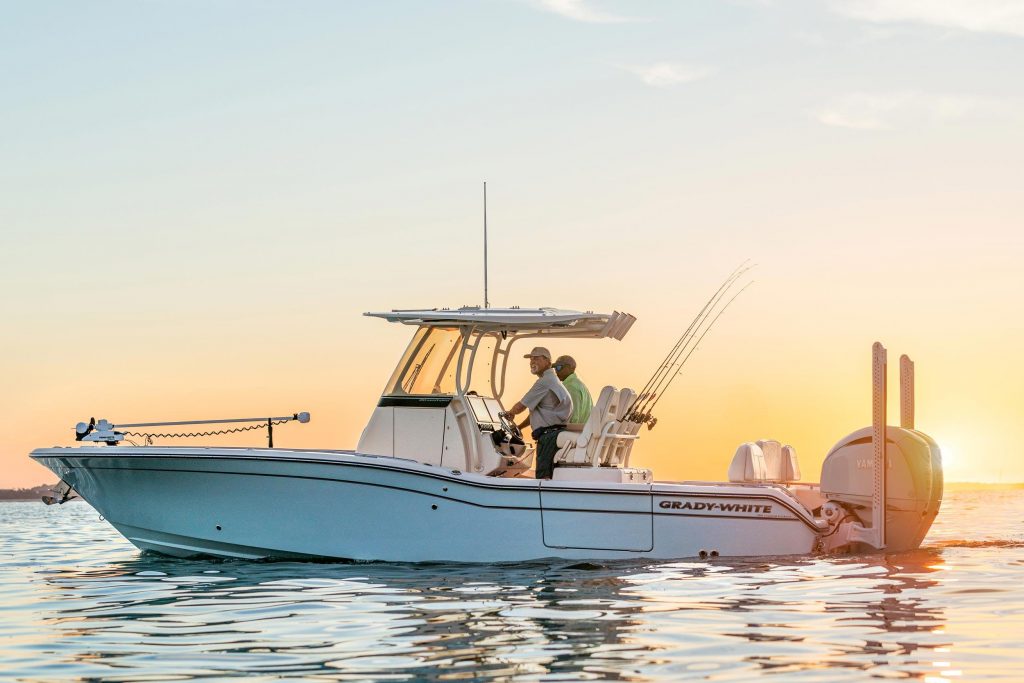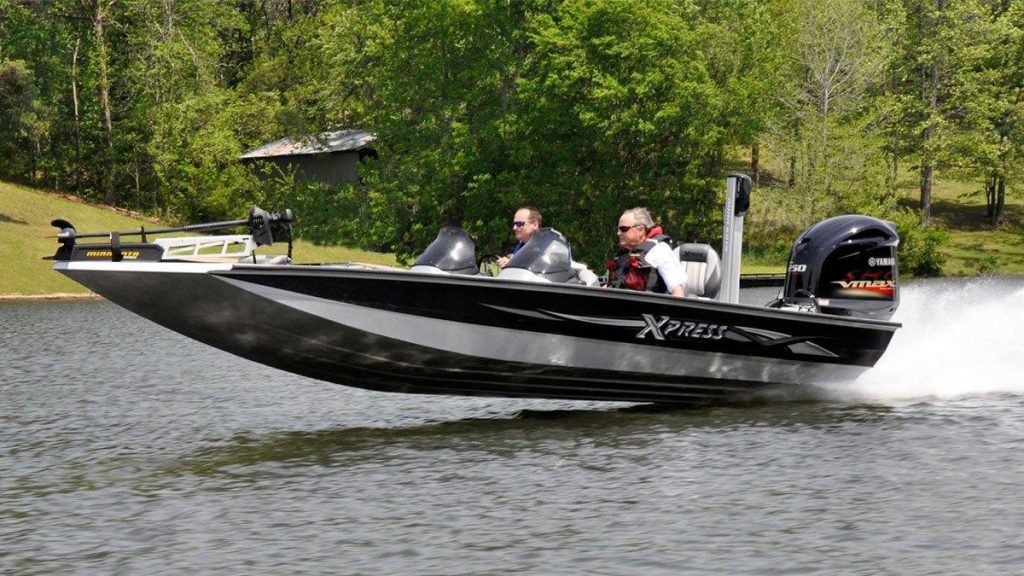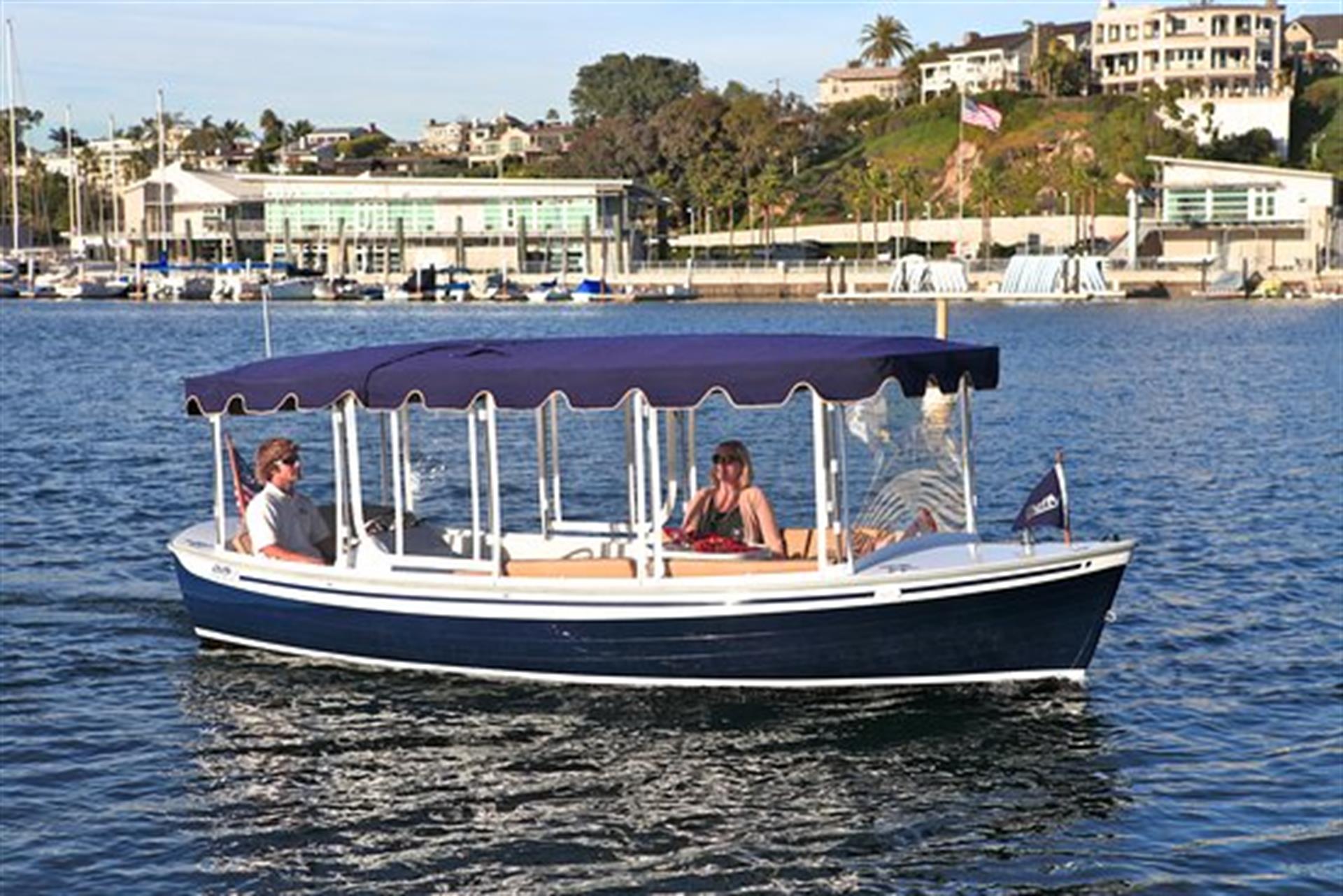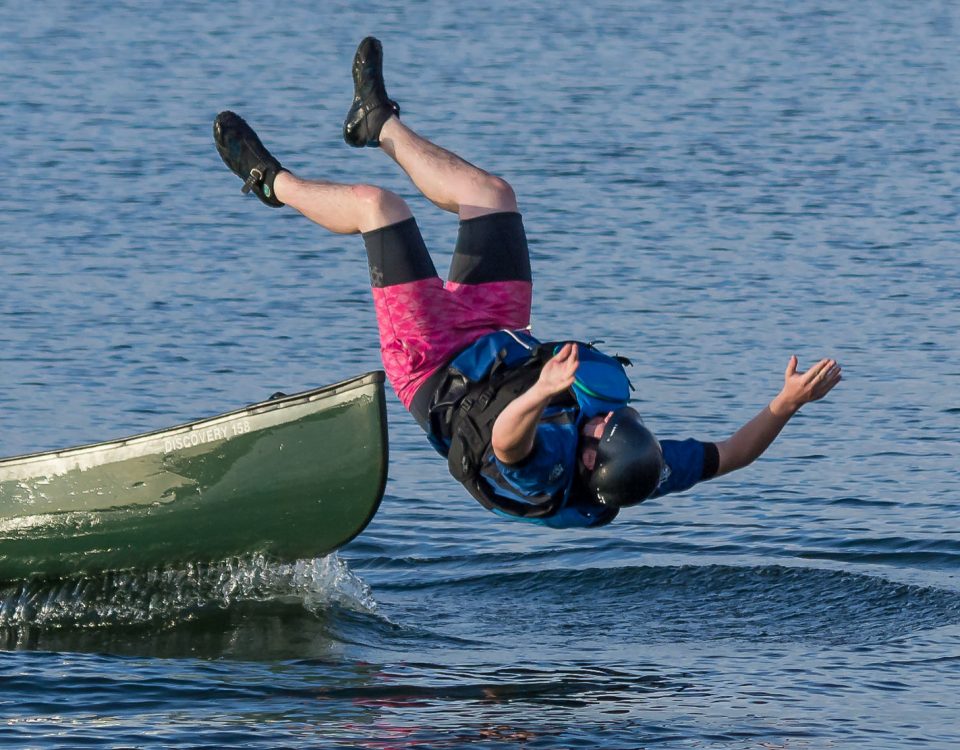Fishing Boats for Sale: Expert Guide to Top Choices
Fishing is a favorite pastime for many, and having the right fishing boat can significantly enhance your experience.
With a plethora of fishing boats for sale, it's essential to know what to look for when making a decision.

From different types and sizes to specific features and budget considerations, this article will guide you through the process of finding the perfect fishing boat for sale.
Before diving into your search, it's crucial to understand the various types of fishing boats available and their intended purposes.
Some fishing boats are designed for specific environments, such as freshwater or saltwater, while others are versatile and can be used in multiple settings.
Additionally, pay attention to hull design, such as deep-V, flat-bottom, or modified-V, as they can impact your boat's performance and stability.

When searching for a fishing boat for sale, make sure to consider the key features that will meet your needs.
These features can include livewells, rod holders, and comfortable seating.
Take your time to research various purchasing options, such as new boats from Bass Pro Shops/Cabela's Boating Centers or used boats on Boat Trader.
Don't forget to factor in long-term maintenance and adhering to applicable safety regulations.
Key Takeaways
- Understanding various types of fishing boats is essential for making an informed decision
- Factor in essential features and purchasing options when looking for a fishing boat
- Keep maintenance and safety regulations in mind for long-term enjoyment of your boat
Types of Fishing Boats
When it comes to fishing, there are a variety of boats available to suit different types of angling and water environments. In this section, I'll introduce you to some of the common types of fishing boats, classified under three major categories: Freshwater Fishing Boats, Saltwater Fishing Boats, and Specialty Fishing Boats.
Freshwater Fishing Boats
Freshwater fishing boats are designed specifically for fishing in ponds, lakes, and rivers.
A few examples of popular freshwater fishing boats include:
- Jon Boats - These simple, flat-bottomed boats are often made from aluminum, and they're similar to bass boats and flats boats. They usually include bench seating for 2 or 3 anglers and have storage space for gear. Check this guide for more information about Jon boats.
- Bass Boats - Made primarily for bass fishing, these boats are equipped with powerful outboard motors and trolling motors. They can either be aluminum or fiberglass, and they provide ample casting space for anglers.
- Tracker or Lund Boats – These are popular brands for freshwater fishing boats, offering a variety of aluminum fishing boat options designed for different fishing experiences. You can find them here and here.

Saltwater Fishing Boats
Saltwater fishing boats are built for the more challenging conditions associated with deep-sea and coastal fishing.
Some common types include:
- Center Consoles - These boats have a console in the center of the boat, allowing anglers to walk around freely and cast from all sides. They usually have a small cabin or cuddy for storage or resting.
- Boston Whaler - A brand well-known among saltwater fishing enthusiasts, Boston Whaler boats are designed for deep-sea and inshore fishing. They're known for their durability and stability, making them ideal for rough sea conditions.
- Flats Boats - These boats are specifically designed for inshore saltwater fishing in shallow waters. They have a shallow draft and are often equipped with a trolling motor and poling platform, allowing the angler to silently approach and stalk fish in shallow areas.
Specialty Fishing Boats
There are also various specialty fishing boats designed with particular types of fishing in mind, such as:
- Offshore sportfishing boats - These larger vessels are built for deep-sea fishing and often have sleeping quarters, a galley, and other amenities for overnight trips.
- Catamarans - Boats with two hulls offer increased stability in rough waters, making them a popular choice for anglers targeting big game fish in choppy seas.
- Fly Fishing Drift Boats - These boats are designed specifically for fly fishing in rivers and other fast-moving waters, with a high bow and stern to easily navigate through rapids.
Factors to Consider When Buying a Fishing Boat
Boat Size and Capacity
When looking for a fishing boat, one of the first things I consider is the size of the boat and its passenger capacity.
The size and capacity determine how many people and how much equipment I can bring, as well as how well the boat can handle different water conditions.
Smaller boats are typically lighter and easier to maneuver, while larger boats provide more space for passengers and gear. For example:
- A small boat (under 16 feet) is suitable for ponds, small lakes, and calm rivers. It can accommodate 2-3 passengers.
- A medium-sized boat (16-24 feet) is suitable for larger lakes and rivers. It can accommodate 4-6 passengers.
- A large boat (24 feet and above) is suitable for open waters and coastal areas. It can accommodate 6 or more passengers.
Additionally, I consider the boat's weight capacity and storage space for holding fishing equipment, coolers, and personal belongings.
Boat Strength and Durability
The strength and durability of a fishing boat are essential factors for ensuring its longevity and keeping me safe while out on the water.
One common material used for building fishing boats is aluminum.
Aluminum boats are strong and lightweight, making them ideal for a wide range of fishing trips. They also resist corrosion, which is vital in saltwater environments.
Another option is fiberglass, which offers increased strength and resistance, but tends to be heavier and more expensive.
Motor Type
When it comes to motor types, I have to decide between outboard and inboard motors. Here's a brief comparison of the two:
- More affordable
- Easier to maintain and repair
- Higher horsepower options available
- Integrated with a trolling motor for slow-speed fishing
Inboard motors:
- Quieter operation
- Better fuel efficiency
- More space inside the boat, as the motor is placed beneath the deck
- More suited for larger boats and rougher water conditions
Key Features of Fishing Boats
Fishability Features
When looking for a fishing boat, it's essential to consider the fishability of the vessel.
Some of the key fishability features to look for include ample storage for fishing gear, rod holders, live wells for bait and caught fish, as well as easy access to the water for casting.
A trolling motor can be extremely helpful when trying to maneuver through the waters gently.
It's also crucial to have enough space for your fellow anglers to move around comfortably during the fishing session.
Boat Style and Design
Fishing boats come in various styles and designs to suit different anglers' needs.
Some popular options are bass boats, flats boats, and the classic Boston Whaler.
My personal favorite, the bass boat, is specifically designed for bass fishing with a flat deck and low sides to allow for easy movement.
They are usually between 16-25 feet and made from aluminum or fiberglass, providing the perfect platform for casting in freshwater lakes.
Flats boats, on the other hand, are characterized by their shallow draft, which enables them to navigate in shallow waters.
They are ideal for fishing in flats areas, where the water depth can be minimal.
Species-Specific Considerations
Considering the target species when choosing a fishing boat is essential.
Different species come with specific habitat preferences, and thus boats must be tailored to their needs.
For instance, a bass boat would be the ideal choice for freshwater bass fishing, while flats boats are perfect for shallow water species like redfish or bonefish.
It's crucial to choose the right boat for your target species to ensure proper fishability, functionality, and comfort throughout your expedition.
So, whether it's the toughness of a Tracker boat or the reliability of a Boston Whaler, make sure the boat you choose meets the requirements of your fishing needs.
Purchasing Options
New vs. Used Fishing Boats
When considering a new or used fishing boat, there are many factors to think about.
A new boat often comes with warranties and guarantees, ensuring that it is in perfect condition for freshwater or saltwater outings. However, new boats can be more expensive than their used counterparts.
On the other hand, a used fishing boat, if well-maintained and thoroughly inspected, can offer a more affordable option for buyers.
Be aware that the condition of used boats can vary, especially when considering saltwater fishing boats, which are often priced from $12,998 to $1,599,959.
Here's a quick comparison between new and used fishing boats:
| New Fishing Boats | Used Fishing Boats |
|---|---|
| Higher initial cost | Lower initial cost |
| Warranty, guarantees | No warranty, may need repairs |
| Limited customization | Customization based on past owner |
| Modern features | May not have latest features |
Where to Find Fishing Boats for Sale
When I started my search for the perfect fishing boat, I came across many resources that offer both new and used models.
One platform I found particularly helpful was Boat Trader, allowing me to locate fishing boats near me and explore their prices, photos, and more.
For those interested in aluminum fishing boats, I found TRACKER's website to be a valuable resource, showcasing their available aluminum boats, including Mod V, Deep V, and Jon boats.
In case you prefer dealing with boat retailers and dealers, Bass Pro Shops/Cabela's Boating Centers offers a wide variety of new and pre-owned freshwater and saltwater fishing boats for sale.
Maintenance and Upkeep
When it comes to maintaining a fishing boat, it's crucial to pay close attention to every aspect, from the engine and hull to the various accessories on board.
In my experience, keeping up with regular maintenance tasks can prolong the life of a boat and ensure a safe and enjoyable fishing experience.
One key aspect of boat upkeep is taking care of the canvas.
I make sure to clean it with a light brush, mild soap, and fresh water to remove dirt, salt, and bird droppings. It's important not to use a household washer or dryer, as this can cause damage to the fabric.
As for the engine, regular maintenance ensures optimal horsepower and performance.
I always check for cowl air intake blockages and inspect the bilge pump auto switch to prevent problems before they arise.
Additionally, it's essential to pay close attention to the hull, looking for any signs of damage such as dings or scratches that may require repair or replacement.
Here's a brief checklist of maintenance tasks I typically follow:
- Clean canvas: Use brush, mild soap, and fresh water
- Inspect engine: Check cowl air intake and bilge pump auto switch
- Check hull: Look for dings, scratches, and other damage
Moreover, I make sure to regularly inspect accessories like fishing equipment, life vests, and rafts, as they play a crucial role in making a fishing trip enjoyable and safe.
Maintaining these items in good condition can prevent unexpected issues, especially during a fishing trip.
Safety and Regulations
In terms of safety and regulations for fishing boats, it is essential to be aware of certain requirements that need to be met in order to stay compliant with the law.
As a fishing boat owner, it's my responsibility to ensure that my vessel meets the U.S. Coast Guard's minimum requirements.
One such requirement involves carrying an efficient sound-producing device, such as a whistle, on-board for boats less than 65.6 ft (20m) in length.
This device should be audible for 1 nautical mile1. For boats larger than 65.6 ft, both a whistle and a bell are needed1.
Fishing boats must also be equipped with specific life-saving gear.
For example, vessels between 26 feet and 65-feet long are required to carry at least one approved ring buoy, with at least one of these buoys being equipped with a line at least 60 feet long2. Boats larger than 65 feet must have three approved ring buoys2.
Other important safety equipment includes:
- Life jackets for all passengers3
- A throwable personal flotation device3
- Visual distress signals, such as flares3
- Fire extinguishers (the number and type depend on boat size)3
- A proper sanitation device for waste management4
As a responsible boat owner, meeting these safety and regulation requirements is crucial to ensure the well-being of all passengers.
It's important for everyone on board a fishing boat to be familiar with the location and usage of this safety equipment, and staying updated with any changes in regulations.
Footnotes
- U.S. Coast Guard Minimum Requirements for Recreational Boats ↩ ↩2
- Commercial Tuna Fishing Safety Gear Checklist USCG Regulations ↩ ↩2
- Coast Guard Safety Equipment for Boats ↩ ↩2 ↩3 ↩4
- A Boater's Guide to Federal Requirements for Recreational Boats ↩
Frequently Asked Questions
What are key factors to consider when buying a used fishing boat?
When buying a used fishing boat, some key factors to consider include the type of boat, your budget, the intended usage, and the boat's condition.
It's essential to ask for the boat's maintenance log, the title free of liens, registration documentation, proof of ownership, a bill of sale, records of paid taxes, and any surveys or inspection certificates.
How do I determine the best size for a fishing boat based on my needs?
To determine the best size for a fishing boat, consider factors such as the number of people who will typically be onboard, the type of water you'll be fishing in, the type of fish species you're targeting, and the storage or trailer space available.
By assessing these factors, you can find the right size of boat to suit your purposes.
What are the maintenance costs for owning a fishing boat?
Maintenance costs for owning a fishing boat can vary depending on factors like the boat's age, size, and materials.
Typical expenses include regular engine service, hull cleaning, annual bottom paint, and any necessary repairs or replacements to components like anchors and electronics.
It is important to keep a detailed maintenance log to ensure your boat stays in good condition.
What features should I look for in a saltwater fishing boat?
For a saltwater fishing boat, some essential features include a durable hull material that can withstand the corrosive effects of saltwater, an adequate fuel capacity for offshore trips, a reliable navigation system, and comfortable seating for extended trips.
You may also want to consider features like a live well, fish boxes, rod holders, and outriggers, which can enhance your fishing experience on the water.
How can I verify the condition of a used fishing boat before purchasing?
To verify the condition of a used fishing boat, it's recommended to hire a professional marine surveyor who can inspect the vessel thoroughly and provide an unbiased assessment of the boat's condition.
Additionally, you should check the boat's maintenance log to ensure all maintenance has been performed and the vessel has been cared for properly.
What are the advantages of buying a commercial fishing boat?
Some advantages of buying a commercial fishing boat include the potential for earning income through charter fishing trips or selling catches. You also get to own a larger and more capable vessel for offshore and long-distance fishing. Additionally, you can experience the joys of operating a workhorse on the water with access to specialized gear and features designed for commercial fishing. However, make sure to consider the costs and obligations that come with owning such a vessel before purchasing.
Charlie is Editor-in-Chief of Sea Magazine







